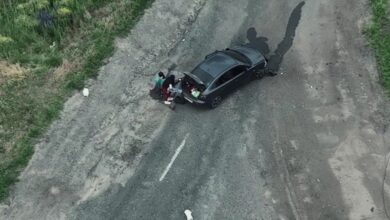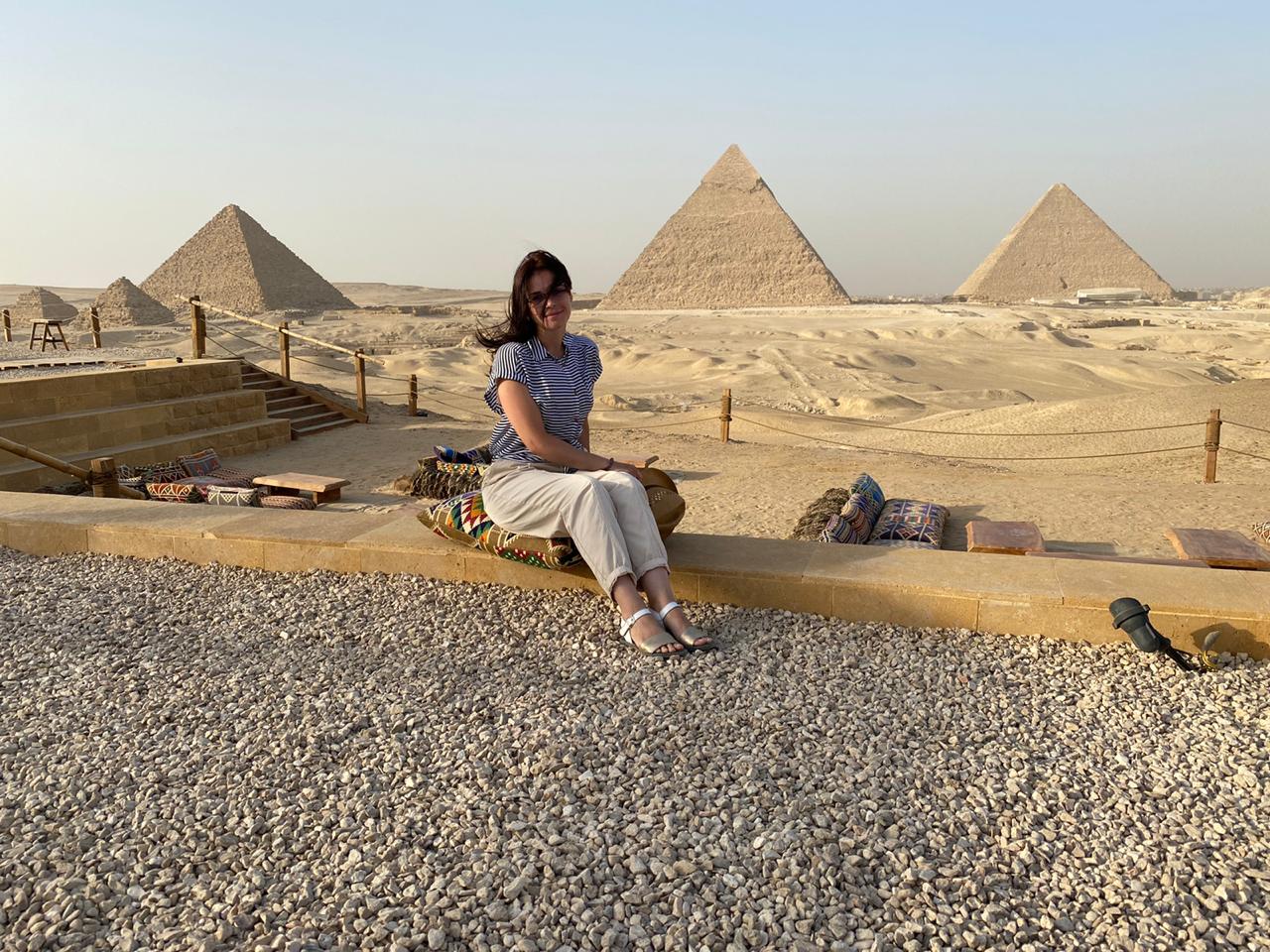Finding beauty in the corners of the popular souq al-gomaa (Friday market), and mourning its destruction in a fire last June, young photographer May al-Hossamy exhibits its story at Darb 1718.
In her first solo exhibition, al-Hossamy reveals the colors of the once-thriving souq al-gomaa, as well as its burnt remnants, through a collection of photographs, installations and a short film. The flea market which attracted thousands of Egyptians and tourists alike enthralled the photographer, almost monopolizing her camera for the past two years.
Al-Hossamy was intrigued by the odd range of items sprinkled throughout the market, which had been one of the biggest in Cairo, competing with Khan al-Khalili and al-Hussein. "I saw antiques, shattered objects, food, furniture, animals, electronic machines, clothes and so many little pieces of broken dolls and phones.” The photographer was mesmerized by objects you would “never imagine” to find in a market, lying there in souq al-gomaa.
One of al-Hossamy’s photographs features shreds of 17 broken objects; a plastic baby doll, a brown toy duckling, a bright turquoise plastic bag, a shimmering CD, a thick leather belt, chocolate wrappers, electric cords, broken telephones, and a crushed toy train make up an image which manages to be intriguing as well as baffling.
In their murky colors, photos of the post-fire souq stir regret and melancholy. Two veiled women sit amid the remnants of their beloved souq, their pink and red headscarves the brightest items in the composition. Shards of glass, wood and scraps of metal are scattered all around.
Snippets purchased from souq al-gomaa appeared time and again in front of al-Hossamy; all her friends and acquaintances would rave about the massive range of products available at the souq. Curious and hopeful, she grabbed her camera and headed towards the market which would come to fascinate her and her camera.
“As soon as I got there, I was overwhelmed with all the bits and pieces scattered around,” says al-Hossamy. “In the colors and dynamism of the souq, I found enormous visual potential.”
The photographer found inspiration in every corner, shooting every possible angle of this far from picturesque, yet visually rich environment. The merchant’s goods, the merchant’s face, and bits of electrical scrap all worked their way into al-Hossamy’s camera. But one day’s snapshots would not suffice.
“I was immediately captivated, and one visit was simply not enough to satisfy my curiosity about this place and its people.”
Camera in hand, al-Hossamy came to visit souq al-gomma more and more frequently, craving the array of scraps and broken parts which seemed to attract people from all over the country, and all over the world.
At the onset of her voyage, the photographer was met with some reluctance, perhaps due to people feeling threatened by her camera. Seeing her as a journalist who would expose their less than legitimate ways of making a living, the merchants and their families were apprehensive. Little by little, al-Hossamy was eventually able to break down their armor.
“After the second or third visit, I started to develop a relationship with the people of the souq,” she recalls. Sharing stories and conversations in the bustle of the market, while people bargain and negotiate in the background, brought the young artist closer to the market.
After graduating in 2003 from the Faculty of Fine Arts, Helwan University, she obtained a masters degree in just one year from the University of Aix-en-Provence in France, and decided to concentrate painting, design, and making short films.
But when five years ago, al-Hossamy stumbled upon the art of photography, she was captivated by her ability to freeze a flickering reality into enduring snapshots.
Already crumbling, souq al-gomaa caught fire last June, destroying the last fragments of many people’s livelihoods. Distraught and loyal, al-Hossamy returned, seeking to express the emotions and the remnants of the market she adored.
“This time, people opened up to me, hoping I could broadcast their cries for help,” says al-Hossamy. “But like I had told them before, I was not a journalist, and could really do nothing to help them.”
In her frustration, al-Hossamy took pictures. She shot a movie and took many photographs, illustrating the people’s loss. She decided that one day, she would tell the stories of the souq’s people and scraps, through her art. Little did she know how quickly that day would come.
Official decisions to close souq al-gomaa and move its people to distant 15 May City were issued after the fire. Desperate not to be moved from the souq which had become their entire lives, the inhabitants opened up to the photographer.
“They told me that they weren’t even asking for compensation; all they wanted was to stay at the souq,” said al-Hossamy. The young photographer had come to share the sentiment with the market’s people; both parties dreamed that the souq would somehow go on.
Afraid of crime and vandalism, the government is insisting on the complete closure of the market. Its residents argue, however that since they have settled and started trading in the area, the crime rate has fallen significantly.
“People are heart-broken that officials are going to put a complete end to the souq without even attempting to find an alternative solution,” says al-Hossamy. “They could have regulated the market, if it’s illegitimate trade that they’re worried about.”
Utterly folkloric, and sometimes unattractive, the chaotic and haphazard nature of the souq could be the trigger for the government’s dismissal, al-Hossamy believes. “Ugly as it some parts of it may be, this is the reality of Egypt, and it cannot be swept under the rug.”
Keen to observe reactions to her collection, the artist watches people at the showroom, and is pleased that individuals from different backgrounds seem emotionally drawn to her work. “Some smiled at the familiar objects; others were saddened by the loss,” she says.
“It was a collection of photographs I shot of the people, and I gave back to other people, through this exhibition.”
A week ago, al-Hossamy decided to create a Facebook page where she tells the story of her two-year project and her love for the souq which she never expected “to burn to ashes and history”. She encourages people to contact her for donations to the distraught people whose livelihoods have been destroyed, a total of 22 families composed of widowed single mothers, elderly couples, children, and others. The artist is reaching out to “people who might be interested in giving something, whether it's money, food, or even clothes.”
The exhibition runs until 19 September, at the Darb 1718 Contemporary Art and Culture Center, located in Kasr El Shams Street, Fustat, Old Cairo.




